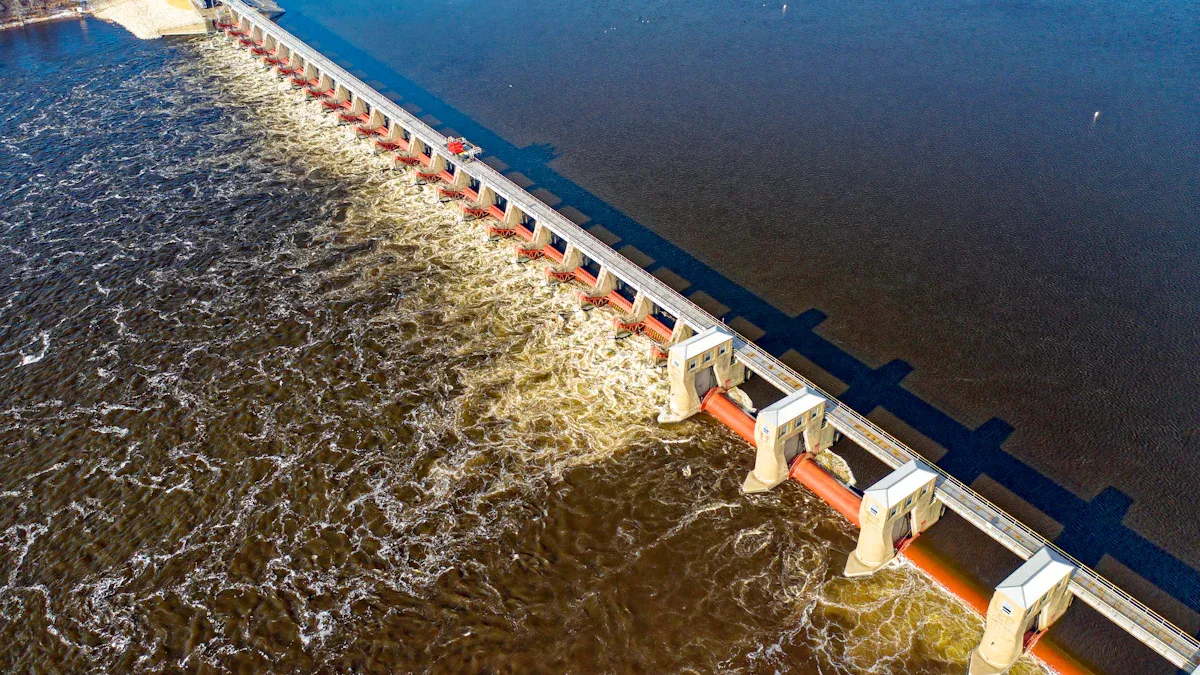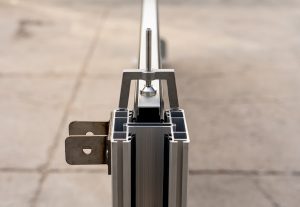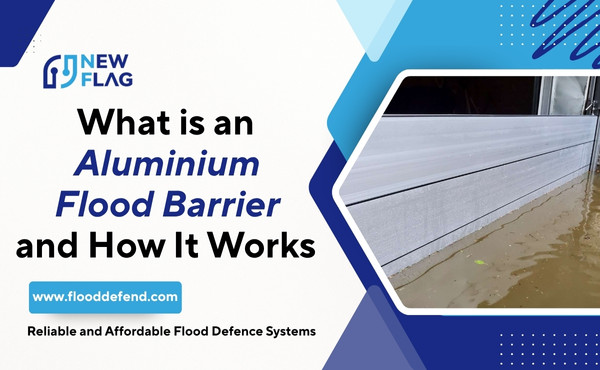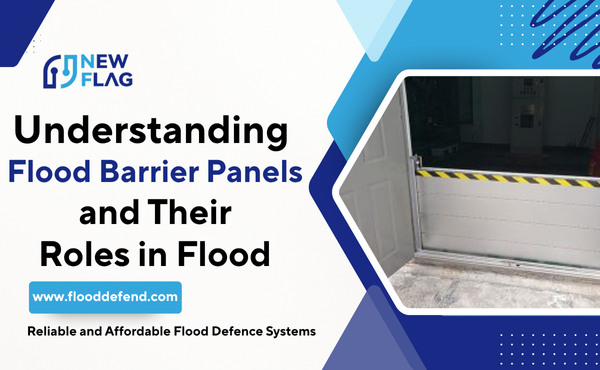
A durable flood control barrier withstands repeated exposure to water, debris, and changing weather. Material choice plays a critical role in long-term flood protection.
Modern options, such as advanced metals and polymers, increase the strength and reliability of each flood protection barrier. Selecting the right barrier depends on understanding which materials offer the most protection against flood damage.
What Defines Durable Flood Control Barriers

Key Durability Factors
Durable flood control barriers rely on several important factors. The strength of the material stands out as the most critical. Strong metals or advanced polymers help a flood barrier resist pressure from rising water and floating debris.
The design of the flood protection barrier also matters. A well-designed barrier fits tightly and prevents water from seeping through gaps. Weight plays a role in both stability and ease of use. Lightweight flood barriers allow for quick installation, while heavier options often provide better resistance against strong currents.
A barrier must also withstand repeated exposure to water. Materials that resist rust, corrosion, and UV damage offer more durable flood protection. Sealing ability ensures that the barrier keeps water out, even during long periods of flooding.
These factors together determine the overall durability and effectiveness of flood barriers.
Why Material Choice Matters in Flood Control Barriers
Impact on Performance and Longevity
Material selection shapes how a flood control barrier performs over time. Stainless steel and marine-grade aluminum panels offer high strength and resist bending under pressure.
Polyethylene and polypropylene provide lightweight options that allow for quick deployment during emergencies. Vinyl-coated polyester stands out for flexibility and ease of handling. Each of these materials responds differently to flood conditions.
Resistance to Corrosion and Wear
Flood control barriers face constant exposure to water, debris, and changing weather. Stainless steel resists rust and corrosion, making it suitable for coastal areas. Marine-grade aluminum also withstands moisture and does not corrode easily.
Polyethylene and polypropylene resist chemicals and UV rays, which helps maintain their structure during repeated flood events. Vinyl-coated polyester prevents water absorption and reduces wear from friction.
Comparing Flood Control Barrier Materials

Flood barriers use a range of materials to protect against flood damage. Each barrier type offers unique strengths and weaknesses. Understanding these differences helps people choose the most durable flood walls for their needs.
Stainless Steel and Galvanized Steel
Stainless steel stands out as a sturdy material for flood barriers. It resists rust and corrosion, making it weather resistant in harsh environments. Galvanized steel also provides strong protection. The zinc coating on galvanized steel helps prevent rust.
Both materials offer high durability and can withstand heavy pressure from flood water and debris. These flood walls often appear in permanent installations where long-term protection matters most.
- Durability: High
- Weight: Heavy
- Corrosion Resistance: Excellent
- Sealing Ability: Strong when paired with proper gaskets
People often choose steel flood barriers for locations with frequent flooding. The heavy weight adds stability, but it can make installation more difficult.
Marine-Grade Aluminum Panels
Marine-grade aluminum panels offer a lighter alternative to steel flood walls. Aluminum resists corrosion and does not rust, even in coastal areas. These panels provide good strength and can handle moderate flood pressure. The lighter weight allows for easier installation and removal.
- Durability: Long-lasting
- Weight: Light
- Corrosion Resistance: Very good
- Sealing Ability: Reliable with proper seals
Aluminum flood barriers suit both temporary and permanent flood wall solutions. They work well in places where quick deployment is important.
Polyethylene and Polypropylene
Polyethylene and polypropylene are popular choices for modern flood barriers. These plastics resist chemicals and UV rays. They do not corrode or rust. The lightweight nature of these materials makes them easy to transport and install. Polyethylene and polypropylene flood walls can flex under pressure, which helps absorb impacts from debris.
- Durability: Moderate to high
- Weight: Very light
- Corrosion Resistance: Excellent
- Sealing Ability: Good with reinforced joints
These flood barriers often appear in temporary setups or emergency situations. The materials work well for rapid response to flood threats.
Vinyl-Coated Polyester
Vinyl-coated polyester provides flexibility and ease of handling for flood barriers. The vinyl coating prevents water absorption and adds strength. This material resists wear from friction and repeated use. Vinyl-coated polyester flood walls can fold or roll for storage.
- Durability: Moderate
- Weight: Light
- Corrosion Resistance: Good
- Sealing Ability: Effective with tight seams
People use vinyl-coated polyester flood barriers for quick deployment and short-term flood protection. The material works best in areas with less severe flooding.
Rubber and Composite Layers
Rubber and composite layers enhance the sealing ability of flood barriers. Rubber forms a tight seal against surfaces, blocking water from entering. Composite materials combine several layers for added strength and flexibility. These flood walls often use rubber gaskets or strips to improve watertightness.
- Durability: High when combined with other materials
- Weight: Varies
- Corrosion Resistance: Excellent
- Sealing Ability: Superior
Rubber and composite flood barriers appear in both permanent and temporary flood wall systems. The enhanced sealing helps protect buildings and infrastructure during severe flood events.
Tip: Lightweight flood barriers allow for faster installation, while heavier options provide greater stability during strong floods.
Flood walls made from weather resistant materials last longer and require less maintenance. People should match the barrier type to the flood risk and installation needs. Choosing the right materials ensures reliable flood protection and long-term durability.
Choosing for Different Needs
Residential Flood Control
Homeowners in flood-prone areas need flood barriers that offer quick installation and reliable protection. Lightweight flood walls and flood tubes work well for residential properties. These solutions allow families to respond quickly when flood warnings appear.
Polyethylene and vinyl-coated polyester barriers provide easy handling and storage. The ideal flood barrier for homes should fit doorways, garages, and low windows. Regular maintenance helps keep barriers ready for emergencies.
Residents benefit from choosing flood barriers that resist corrosion and wear, especially in regions with frequent rain.
Tip: Homeowners should assess local flood risks and select flood barrier solutions that match the layout of their property.
Commercial and Industrial Applications
Businesses and factories require flood barriers that protect valuable equipment and inventory. Flood walls made from stainless steel or marine-grade aluminum offer strong defense against flood damage.
These materials withstand heavy water pressure and repeated use. The ideal flood barrier for commercial sites should cover large openings and loading docks. Companies in flood-prone areas often install permanent flood protection measures for year-round preparedness. Maintenance teams inspect barriers after each flood event to ensure continued effectiveness.
| Application Area | Recommended Barrier Type | Benefits |
|---|---|---|
| Warehouses | Steel flood walls | High durability |
| Retail Stores | Aluminum panels | Easy installation |
| Factories | Composite barriers | Superior sealing |
Municipal and Infrastructure Projects
Cities and towns face unique challenges in flood control. Municipalities protect roads, bridges, and public buildings with large-scale flood barriers. Permanent flood walls and composite solutions provide long-term protection for infrastructure. The ideal flood barrier for municipal use must withstand severe weather and heavy traffic.
Teams deploy flood tubes and modular barriers during emergencies to block rising water. Regular inspections and upgrades improve preparedness and reduce flood damage.
Note: Municipal leaders should invest in durable flood barriers to safeguard critical infrastructure and public safety.
Flood-prone areas benefit from tailored flood barrier solutions. Matching the right barrier to each property type increases protection and ensures long-term durability.
Practical Tips for Durable Flood Control Barriers
Consulting Professionals
Seeking advice from professionals helps property owners make informed decisions about flood control barriers. Experts understand the strengths and weaknesses of different materials. They can recommend the best options for specific flood risks and property types.
Professionals also know how to assess the durability of a barrier. They often provide guidance on installation and maintenance, which increases the lifespan of the flood protection system.
Tip: A consultation with a flood control specialist can prevent costly mistakes and improve long-term protection.
Assessing Local Flood Risks
Understanding local flood risks is essential for choosing the right barrier. Each area faces unique challenges, such as heavy rainfall, river overflow, or coastal surges. Property owners should review flood maps and historical data.
They can also talk to neighbors or local authorities about past flood events. This information helps match the barrier’s durability to the expected flood conditions.
A simple checklist for assessing flood risks:
- Check local flood maps
- Review weather patterns
- Ask about past flood events
- Identify vulnerable areas on the property
Balancing Budget and Quality
Balancing cost and quality ensures the best value in flood protection. Durable barriers may cost more at first, but they save money over time by reducing repairs and replacements.
Property owners should compare the lifespan and maintenance needs of each barrier type. A table can help weigh the options:
| Barrier Type | Initial Cost | Durability | Maintenance Needs |
|---|---|---|---|
| Steel Panels | High | Excellent | Low |
| Aluminum Panels | Moderate | Very Good | Low |
| Polyethylene Tubes | Low | Good | Moderate |
Note: Investing in a high-quality flood barrier protects property and reduces long-term expenses.
Choosing the right flood control barrier involves careful planning, expert advice, and a focus on durability.
Conclusion
Selecting quality materials for durable flood control barriers brings lasting benefits. The ideal flood barrier offers strong flood protection barrier performance and stands up to repeated flood events. Flood barrier solutions that match local risks and property needs provide the best protection.
Consulting professionals and assessing risks help people choose the ideal flood barrier for their situation. Durable flood barrier solutions deliver long-term benefits and reduce future costs. Prioritizing durability in flood barrier solutions ensures reliable flood protection for every property.






